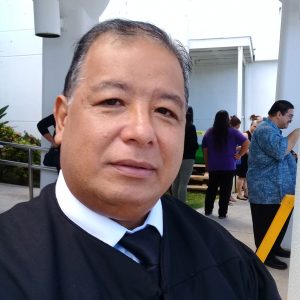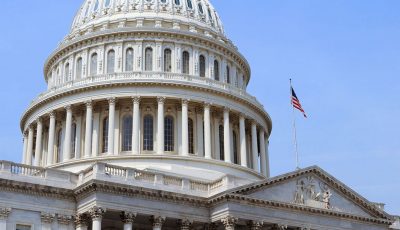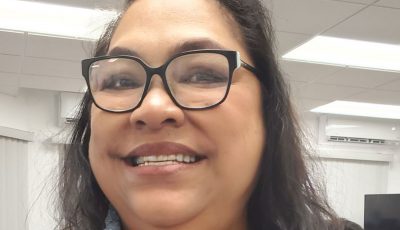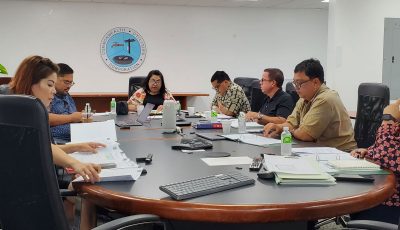Inos: Enact law sparing Judiciary from CUC disconnection
CNMI Supreme Court Associate Justice Perry B. Inos is urging the Legislature to consider enacting a law that removes the option for the Commonwealth Utilities Corp. to disconnect utility services to the Judiciary.
Speaking at the House of Representatives Ways and Means Committee hearing for the proposed 2024 budget for the Judiciary, Inos said many government agencies can still provide services even if their electricity is disconnected, but it’s a different story with the Judiciary.
“In reality, a disconnection to Guma’ Hustisia…means that the third branch of the government will shut down. The entire branch, your sister branch will shut down,” he said.
Last May 3, acting CUC executive director Betty G. Terlaje sent disconnection notices to the Judiciary and several other government agencies for unpaid utility services as of March 31, 2023. Terlaje gave the Judiciary until May 18, 2023, to pay or settle the $2.4 million in unpaid utility services to avoid power and water disconnection to Judiciary facilities on Saipan, Tinian, and Rota. The disconnection did not push through after the CNMI Judiciary disputed the $1.6 million utilities billing for the Guma’ Hustisia building on Saipan.
Inos told the Ways and Means Committee Friday that they are all contained in one unit, in one building and that practically 90% of all of their work is at Guma’ Hustisia.
“When CUC disconnects power, water, and sewer services, we’re done. This is constitutionally unacceptable,” said the associate justice, adding that this year they are asking for $2.8 million for utilities to cover fiscal year 2024 and allow them to settle their CUC arrears.
Inos said the Judiciary’s budget requests over the years have been based on historical utilities usage, or whatever they used the previous year. According to their finance manager, John Villagomez, their average monthly use is around $60,000, or $720,000 a year.
Inos said the Judiciary, however, has always been underbudgeted for this particular need. “It will be a continuing saga if, again, we get something lower than $720,000. So this is not a guesswork,” Inos said.
He said they are trying to address the CUC disconnection notice. “We’re really put in a bad situation because how do you address a usage deficiency in your electricity bill if we just don’t have the funds?” Inos asked.
Director of Courts Sonia A. Camacho told the committee that the Judiciary and the Executive Branch are still in the middle of talks on how to address the Judiciary’s arrears. “But what remains is how to do we proceed in paying for utilities for our three courthouses in the CNMI?” Camacho asked.
In response to Rep. John Paul Sablan (Ind-Saipan), Camacho said they are asking for an additional $900,000 on top of the $300,000 to meet the $1.2 million utilities need for fiscal year 2024. She said they are also asking for an additional $2.7 million to cover the arrears.
“We are currently in discussion with the Executive Branch and the governor has been very helpful in this regard,” Camacho said.
She said they have contested one of the amounts in the disconnection notice and that is for water and sewer usage for the Guma’ Hustisia.
Camacho said CUC has sent engineers to review the meter and some of the variables that they think are creating those amounts.
She said there was a huge spike in their monthly water and sewer charges as it jumped by 18,000% from July 2022 to the present. “So that’s why there is a set-aside figure that CUC has agreed to while we look at that and see if that amount is truly owed or if there are some areas where they are considered as not owed and we will be excused from it,” Camacho said.
She said, however, that based on their discussions, CUC’s position is that the amount remains the same.
Camacho said this is why they asked the committee to also consider giving them the funds to pay these arrears, in addition to their annual coverage for utilities.
She said the bench members are arbiters of law and these are the very types of cases that come before them—non-payment of arrears. “So as a judicial system, when these amounts are not paid, it erodes the confidence in the system itself,” she said.
Camacho said these arrears arose because they were assured by the prior administration leadership that they would be combined and paid with the central government’s CUC billings under the American Rescue Plan Act funding.
“That obviously didn’t happen, but the fact of the matter is that it’s owed and so that’s why we’re asking for that supplemental amount on top of the $900,000,” Camacho said.




























